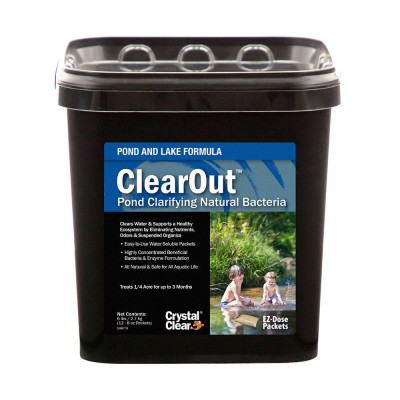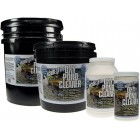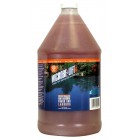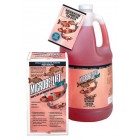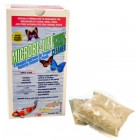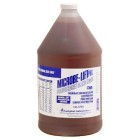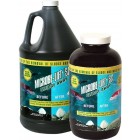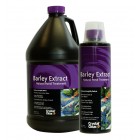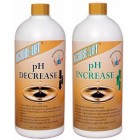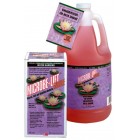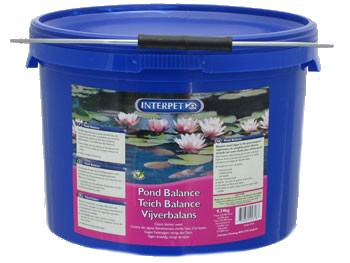The clarity of the water from a pond or garden water depends on the interaction of a variety of biological processes, as determined by the water quality and the water purifying bacteria.
Sometimes these processes are disrupted by external factors (such as fallen leaves, organic waste etc.), so that the water becomes cloudy and algae appear. That is why it is important to help nature to the fullest and protect your swimming pond against these negative influences.
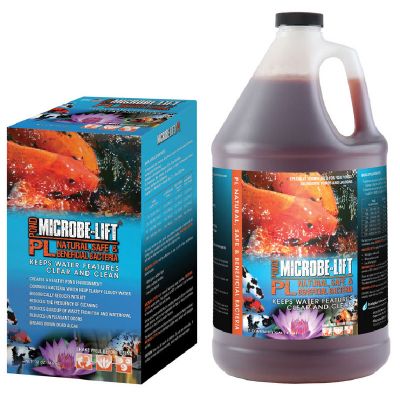 PL
PLMicrobe-lift PL™ provides sustained biological activity in water temperatures even under 55 degrees. It helps to reduce ammonia and nitrogen levels and reduces organic waste build up. PL will seed and maintain biological filters and will improve dissolved oxygen levels. It digests organic sludge, reduces unpleasant odours and breaks down both dead algae and uneaten food.
Available in 16ounce, 32 ounce,and 1 gallon (128 ounce) jugs.
Restore pond clarity, water quality and pond balance with Crystal Clear® ClearOut™. ClearOut™ contains specialized strains of beneficial aerobic bacteria that digest organic debris that cause decreased water clarity, muck accumulation & pond imbalance.
Clean, Clear, Healthy & Balanced
Water clarity issues and water imbalances are commonly caused by an abundance of organic debris brought on my fish waste, leaves and other plant decay. The beneficial aerobic bacteria in Crystal Clear® ClearOut™ quickly go to work to consume organic debris that cause cloudy water, muck accumulation, foul pond odors and imbalanced pond water.
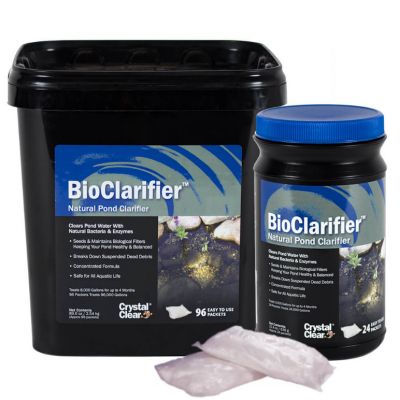 BIOCLARIFIER
BIOCLARIFIER
BioClarifier is the new brand name of the popular Biological Clarifier™ by CrystalClear® that naturally clears water, removes odors and breaks down suspended dead debris and decaying leaves with billions of bacteria colonies and added enzymes.
The result is a cleaner pond, healthier fish, improved dissolved oxygen levels and reduced ammonia levels.
CrystalClear® BIOCLARIFIER™ comes in easy to use water soluble packets and can be used in ponds, fountains, bubblers and disappearing waterfall features. Use when water temperatures are above 50°F.
One of the common by products of protein breakdown, like the protein in fish food, is ammonia. This ammonia can be toxic to fish and other aquatic life in concentrations as low as 1.0 mg/L depending on the pH. Fish emit this through their gills. The majority of the ammonia in the pond can be traced to this source. Some can also be traced to the breakdown of uneaten fish food and plant material. When a pond is conditioned or capable of cycling, it means that the necessary bacteria have been developed to convert the ammonia to nitrite and, subsequently, nitrate. In many ponds, this nitrate can accumulate and provide nutrients for unwanted plant growth. MICROBE-LIFT/PL allows your pond to take the nitrogen cycle another step by further chemically reducing the nitrate to nitrogen gas, which harmlessly bubbles out of the pond.
Another important natural cycle is the carbon cycle. All living things primarily comprise carbon. Fish waste contains a carbonaceous component. Much of the sludge that builds up on the bottom of most ponds is organic—made up of carbon compounds. Other bacteria in MICROBE-LIFT/PL known as heterotrophs break down this sludge and convert it to carbon dioxide and water. Used in conjunction with MICROBE-LIFT/ Sludge Awa y, MICROBE-LIFT/PL can keep most ponds clean and sludge free.
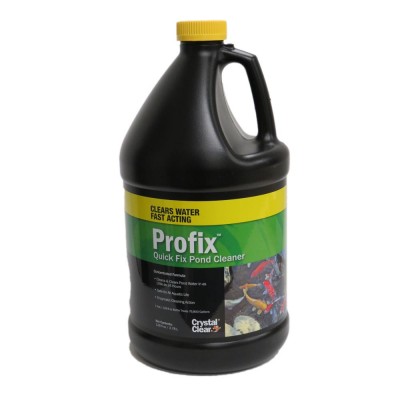 ProFix®
ProFix®
Complete Pond Cleaner Contains A 9% Solution For Rapid Action. ProFix is the new name of the popular D-Solv9 and has the same formula and, like D-Solv9, clears pond water regardless of color and removes suspended organic debris. ProFix® is formulated to be stronger, work faster and more economical per treatment than any similar product on the market today. Use ProFix® in the early Spring and hot Summer months when pond water begins to change due to photosynthesis and nutrient loading. Treating discolored pond water has never been easier.
Product Description:
Contains photosynthetic bacteria which limits algae growth through “competitive exclusion” and natural selective inhibition while also improving oxygen levels.
Creates a healthy environment for your pond or raceway, promoting faster fish growth.
Reduces ammonia and nitrogen levels.
Significantly reduces noxious odors caused by algae, fish waste and urine.
Reduces biological oxygen demand (B.O.D.) and related organics which can cause off flavors in fish.
Reduces buildup of bird droppings, fish feed and dead leaves.
Inhibits development of eggs and larvae of water-breeding insects, flies, mosquitoes, etc. Breaks down dead algae.
Dissolves away organic sludge and slime.
Can be used in tanks, raceways, lagoons, ponds and pools.
Contains nitrifiers, including both nitrosomonas and nitrobacter species.
Safe for all wildlife in and around the pond
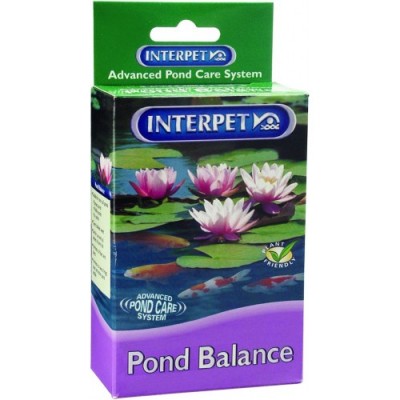
Algae control for filamentous algae in ponds in Canada. String Algae is a problem that affects most ponds, the rapid growing filamentous stringy algae can spoil the appearance of the pond. It will also clog pumps and filtration equipment. Pond Balance makes key nutrients unavailable to algae preventing string algae and horse hair algae and blanketweed from forming. Use it as part of your advanced pond care system.
- Not a algeacide
- Will not harm plants.
- Locks out nutrients string algae needs.
- Naturally balances a pond
Award Winning Interpet Pond Balance is the solution to this problem. Pond Balance is a unique non-algicide plant friendly formula ensuring that no harm comes to any other pond plants, fish, filtration bacteria or water using wildlife. Pond Balance does not affect plants because it works by making unavailable a nutrient that is only required by filamentous algae and thus literally starves it out of existence. Pond Balance also contains plant stimulants and so helps establish a naturally balanced pond. This granular product is easy to apply.
- Pond Balance 8751 (1 pound) – Treats 3,600 gallons once or 600 gallons 6 times
- Pond Balance 8752 (3 pounds) – Treats 10,800 gallons once or 1800 gallons 6 times
- Pond Balance 8753 (20 pounds) – Treats 67,250 gallons once or 11,208 gallons 6 times

